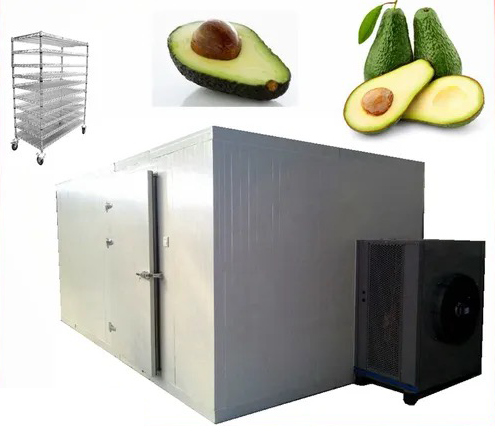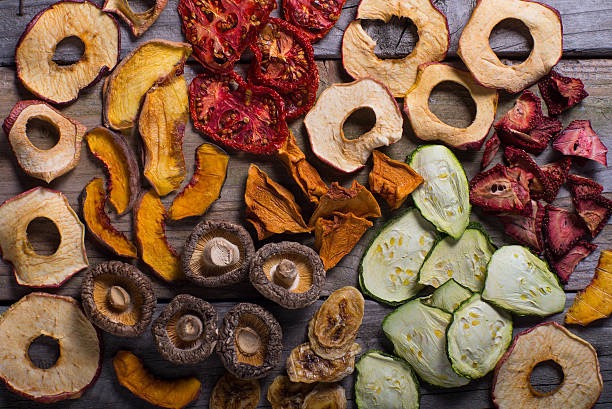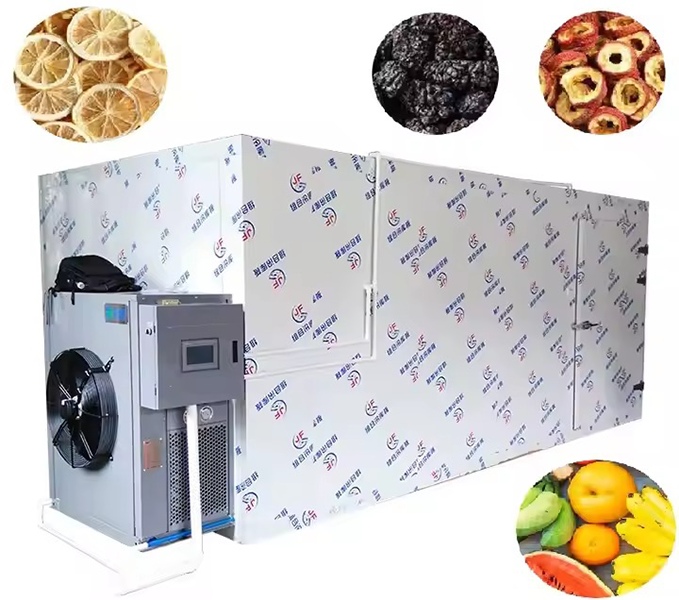
Content Menu
● Understanding Food Dehydration
>> How Food Dehydrators Work
● The Role of Heat Pumps in Food Drying
>> Working Principle
● What Happens to Humidity After Use?
>> Humidity Management in Heat Pump Dryers
● Advantages of Using Heat Pump Dryers for Food
● Optimizing Food Dehydration Processes
>> 1. Proper Loading Techniques
>> 2. Temperature Control
>> 3. Regular Maintenance
● The Science Behind Heat Pump Drying
>> Energy Efficiency Explained
● Impact on Food Quality
● Applications in Food Industry
● Advanced Technologies in Heat Pump Drying
>> Hybrid Drying Systems
● Future Trends in Heat Pump Technology
>> Automation and Smart Controls
>> Sustainability Initiatives
● Conclusion
● FAQ
>> 1. What types of foods can be dried using a heat pump dryer?
>> 2. How long does it take to dry food with a heat pump dryer?
>> 3. Can I adjust the temperature settings on a heat pump dryer?
>> 4. How do I manage humidity levels after using a heat pump dryer?
>> 5. Are heat pump dryers environmentally friendly?
● Citations:
Drying food efficiently while preserving its taste, texture, and nutritional value is a crucial aspect of food processing. One of the most effective methods for drying food is through the use of food dehydrators, particularly those employing heat pump technology. This article explores the workings of food dehydrators, the impact of humidity from heat pump dryers, and how these machines can be optimized for better performance.

Understanding Food Dehydration
Food dehydration is a process that removes moisture from food to inhibit the growth of microorganisms and enzymes that cause spoilage. This method not only extends the shelf life of food but also concentrates its flavors.
How Food Dehydrators Work
Food dehydrators operate by circulating hot air around food items, which helps to evaporate moisture. The primary components include:
- Heating Element: Generates heat to warm the air.
- Fan: Circulates hot air evenly around the food.
- Trays: Hold the food items being dried.
The effectiveness of a dehydrator is influenced by its design and technology. Heat pump dryers utilize advanced technology that enhances energy efficiency and drying quality.
The Role of Heat Pumps in Food Drying
Heat pump dryers are known for their energy efficiency and ability to maintain lower drying temperatures compared to traditional dryers. They work on the principle of extracting heat from the environment and using it to evaporate moisture from food.
Working Principle
1. Heat Absorption: The heat pump absorbs low-temperature heat from the air.
2. Heat Transfer: This heat is then converted into high-temperature energy, which is circulated in the drying chamber.
3. Moisture Removal: As air circulates, it absorbs moisture from the food, which is then expelled outside.
This process not only conserves energy but also preserves the quality of the food being dried.
What Happens to Humidity After Use?
After using a heat pump dryer, humidity levels in the surrounding environment can be affected due to the nature of how these machines operate.
Humidity Management in Heat Pump Dryers
- Condensation: As moisture is extracted from food, it condenses within the machine and is collected in a reservoir or drained away.
- Air Circulation: The air that exits the dryer may still contain some humidity, depending on how effectively moisture was removed during the drying cycle.
In well-designed systems, humidity levels should be manageable; however, improper setup or maintenance can lead to increased humidity in the surrounding area.

Advantages of Using Heat Pump Dryers for Food
Heat pump dryers offer several advantages over traditional drying methods:
- Energy Efficiency: Consumes significantly less energy compared to conventional dryers.
- Quality Preservation: Maintains color, flavor, and nutritional content better than high-temperature methods.
- Versatility: Suitable for a wide range of foods including fruits, vegetables, meats, and herbs.
Optimizing Food Dehydration Processes
To achieve optimal results with heat pump dryers, consider the following tips:
1. Proper Loading Techniques
Ensure that trays are not overcrowded. Allow adequate space for air circulation around each piece of food.
2. Temperature Control
Adjust temperature settings based on specific food types. For instance:
- Fruits: 55°C - 65°C
- Vegetables: 60°C - 70°C
- Meats: 65°C - 75°C
3. Regular Maintenance
Regularly clean filters and check drainage systems to prevent humidity buildup and ensure efficient operation.
The Science Behind Heat Pump Drying
The effectiveness of heat pump dryers lies in their ability to control both temperature and humidity within the drying chamber.
Energy Efficiency Explained
Heat pump dryers work by transferring heat rather than generating it through combustion or electrical resistance. This mechanism allows them to utilize ambient air efficiently:
- By extracting heat from ambient air at lower temperatures (around 60°C or 140°F), they can maintain a consistent drying environment without excessive energy consumption.
- The system's design enables recirculation of drier air back into the chamber after moisture has been extracted, further enhancing efficiency.
Impact on Food Quality
One significant advantage of using heat pump dryers is their ability to preserve the nutritional quality of dried products:
- Nutrient Retention: Studies have shown that using lower temperatures during drying helps retain vitamins and other nutrients that might be lost in traditional high-temperature drying processes[2][4].
- Color and Flavor Preservation: The gentle drying process minimizes oxidative reactions that can degrade color and flavor profiles in fruits and vegetables[3][10].
Applications in Food Industry
Heat pump dryers are increasingly being adopted across various sectors in the food industry due to their versatility:
- Fruits and Vegetables: Ideal for drying sensitive produce like apples, bananas, and tomatoes without compromising quality.
- Meat Products: Used for jerky production where maintaining texture and flavor is essential.
- Herbs and Spices: Retain aromatic compounds better than conventional methods.
Advanced Technologies in Heat Pump Drying
The integration of advanced technologies into heat pump drying systems enhances their capabilities even further:
Hybrid Drying Systems
Combining heat pumps with other drying technologies like microwave or infrared can significantly improve efficiency:
- Microwave-assisted heat pumps reduce drying times by applying electromagnetic radiation directly to moisture molecules within foods[6][9].
- Infrared heating combined with heat pumps provides rapid surface heating while ensuring deep moisture removal without overheating sensitive materials[10].
Future Trends in Heat Pump Technology
As technology advances, we can expect several trends impacting how heat pumps are utilized in food processing:
Automation and Smart Controls
The implementation of IoT (Internet of Things) technology allows for real-time monitoring and control over drying conditions:
- Sensors can adjust temperature and humidity levels automatically based on feedback from product conditions[8].
Sustainability Initiatives
With increasing focus on sustainability within industries, manufacturers are innovating ways to make heat pump systems even more eco-friendly:
- Utilizing renewable energy sources such as solar power to operate these systems can further reduce their environmental footprint[7][9].
Conclusion
Heat pump dryers represent a significant advancement in food dehydration technology. By understanding how these machines work and managing humidity effectively, manufacturers can produce high-quality dried foods while minimizing energy consumption. This technology not only benefits producers but also ensures consumers receive nutritious and flavorful products.

FAQ
1. What types of foods can be dried using a heat pump dryer?
Heat pump dryers can effectively dry fruits, vegetables, meats, herbs, and even grains.
2. How long does it take to dry food with a heat pump dryer?
Drying times vary depending on the type of food but generally range from 4 to 12 hours.
3. Can I adjust the temperature settings on a heat pump dryer?
Yes, most modern heat pump dryers come with adjustable temperature settings tailored for different types of foods.
4. How do I manage humidity levels after using a heat pump dryer?
Ensure proper drainage systems are in place and consider using dehumidifiers if necessary in humid environments.
5. Are heat pump dryers environmentally friendly?
Yes, they consume less energy compared to traditional drying methods and have lower carbon footprints due to their efficiency.
Citations:
[1] https://www.youtube.com/watch?v=wVypalh7Mrg
[2] https://pmc.ncbi.nlm.nih.gov/articles/PMC3550864/
[3] https://annals.fih.upt.ro/pdf-full/2016/ANNALS-2016-1-34.pdf
[4] https://vn.dryers-dehydrators.com/info/advantage-of-food-heat-pump-dryer-81163580.html
[5] https://www.youtube.com/watch?v=aFFMQU5Qf18
[6] http://sciencebeingjournal.com/sites/default/files/Octa%20J.%20Biosci.%20Vol.%2010%20(2)124-133_0.pdf
[7] https://www.researchgate.net/publication/365175117_Comprehensive_assessment_of_heat_pump_dryers_for_drying_agricultural_products
[8] https://www.researchgate.net/publication/236189440_Heat_pump_assisted_drying_of_agricultural_produce_-_An_overview
[9] https://kerone.com/blog/heat-pump-drying-of-fruits-and-vegetables/
[10] https://www.tandfonline.com/doi/full/10.1080/15538362.2021.1911746











